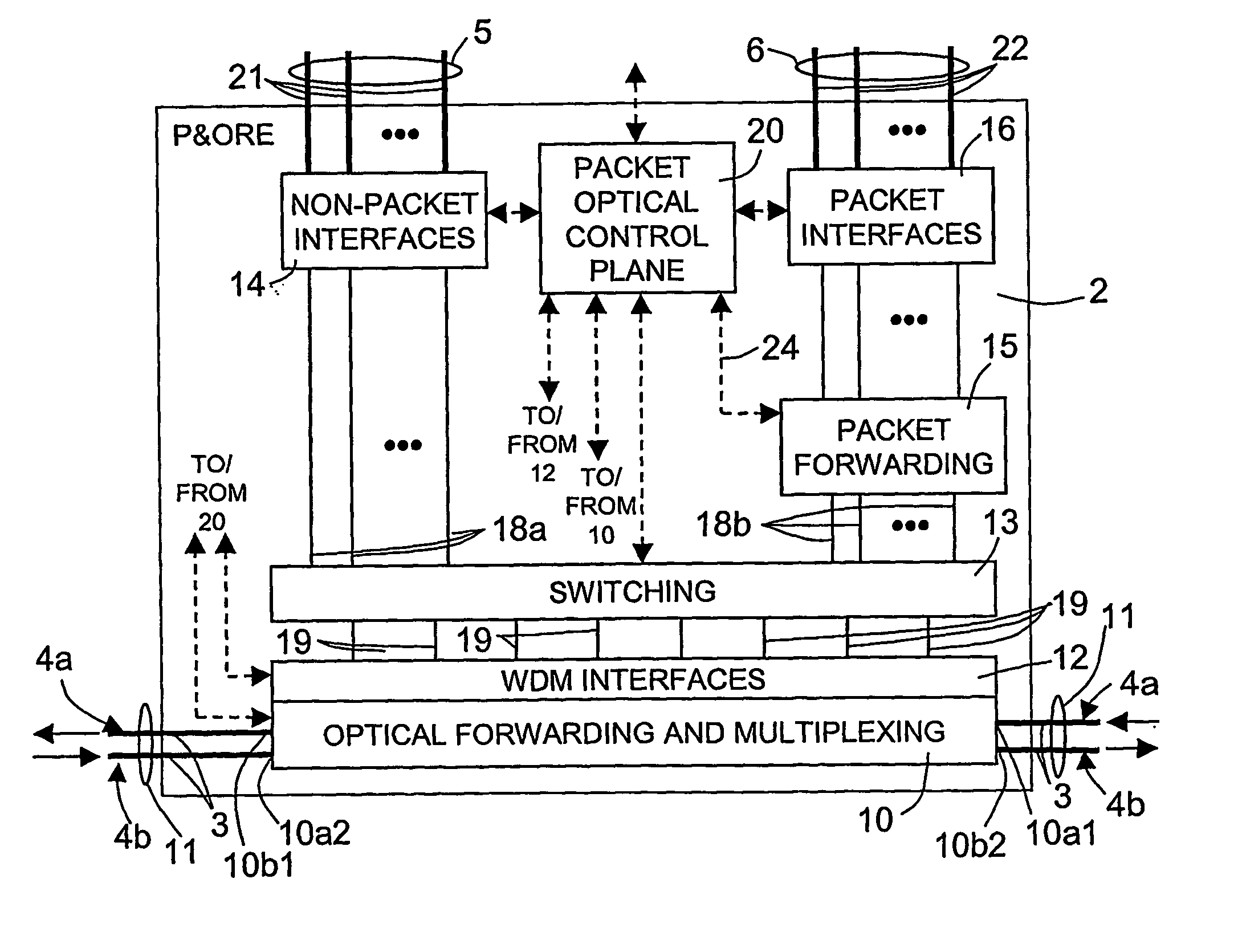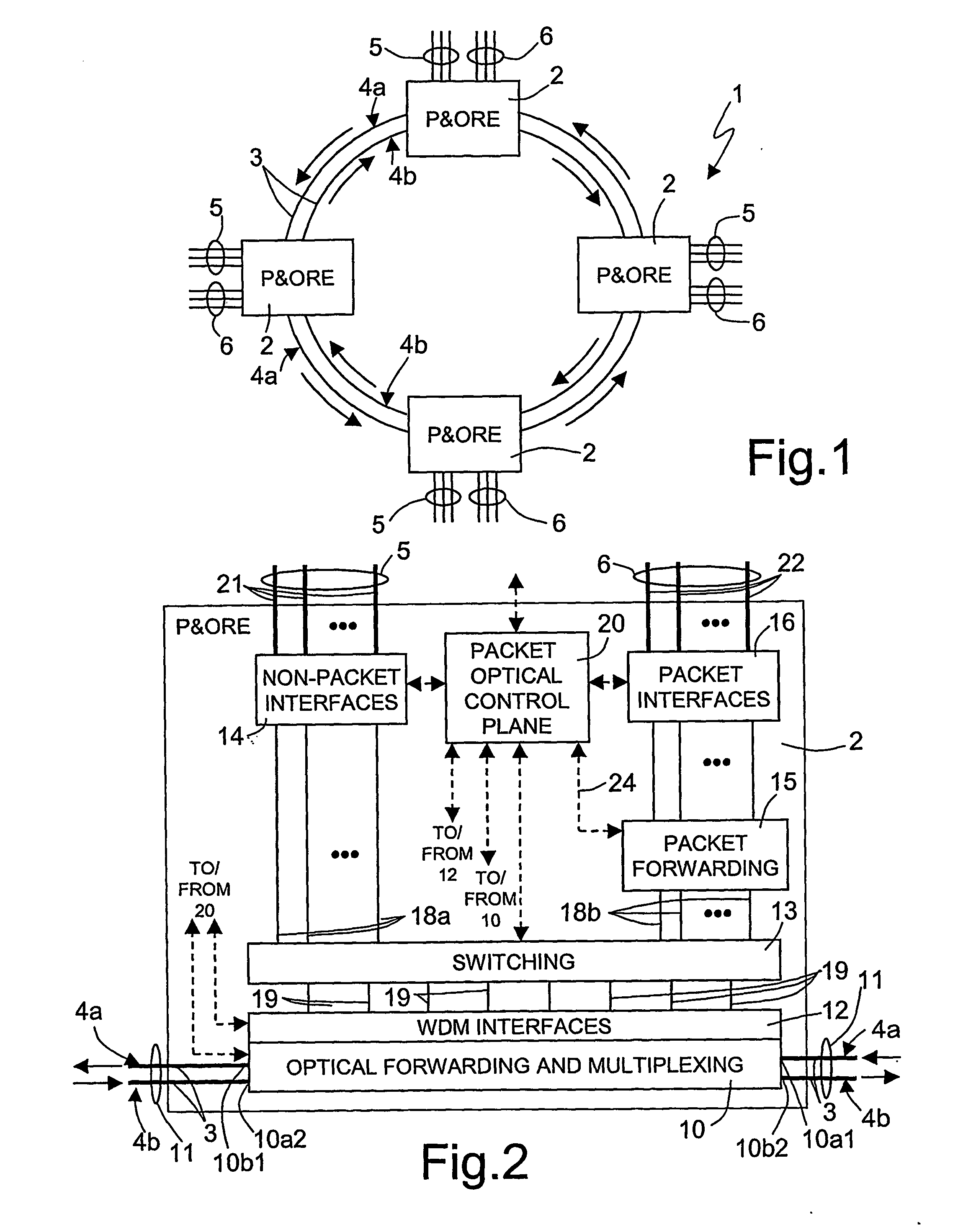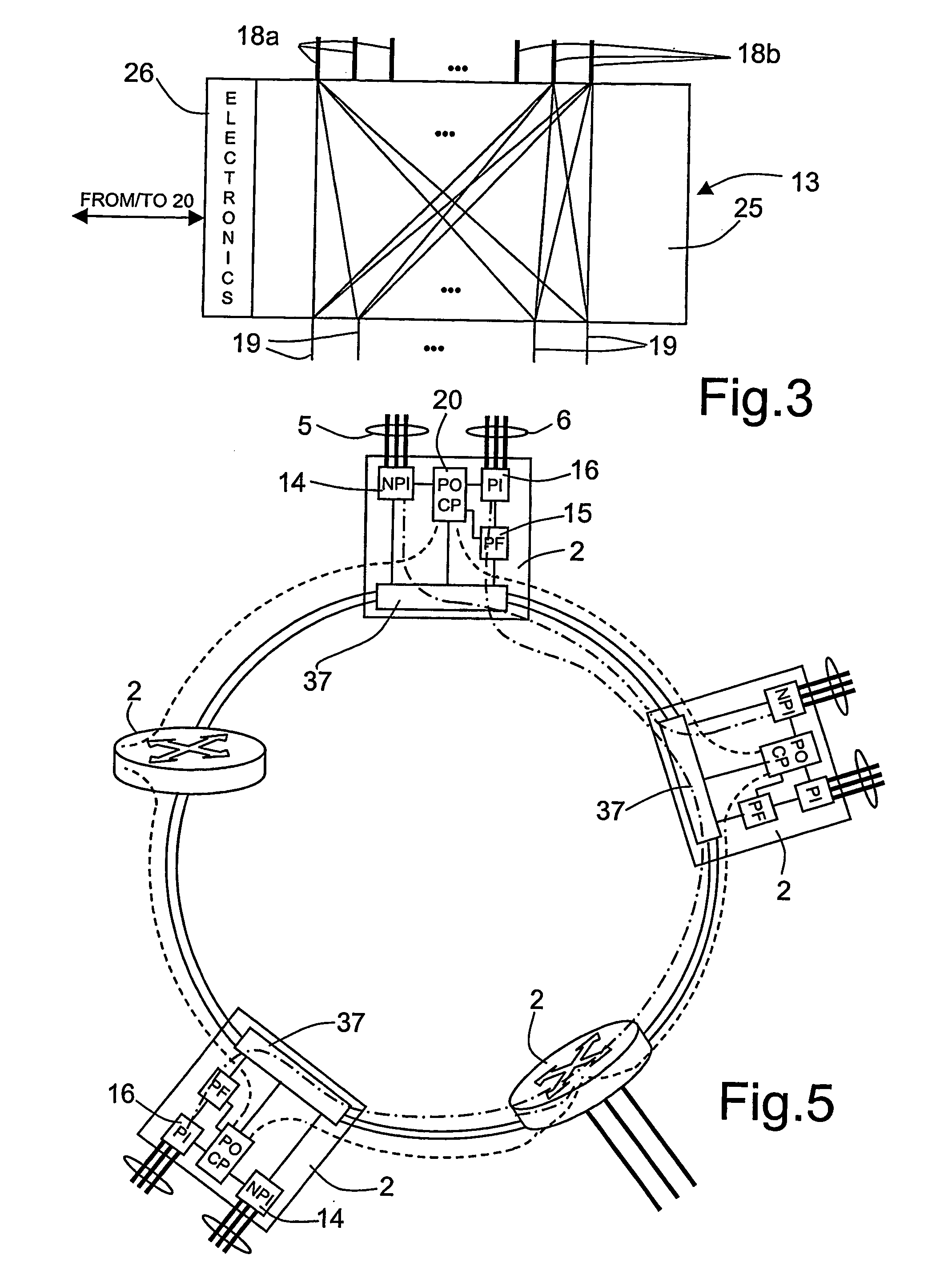Packet and optical routing equipment and method
a technology of optical routing and equipment, applied in the field of optical communication systems, can solve the problems of complex and expensive network configurations that do not facilitate, document however does not disclose in detail the architecture of the nodes of the network, and in particular, the complexity of the architecture, so as to save the expenditure of implementation and operation.
- Summary
- Abstract
- Description
- Claims
- Application Information
AI Technical Summary
Benefits of technology
Problems solved by technology
Method used
Image
Examples
Embodiment Construction
[0033]FIG. 1 illustrates an optical network 1 implementing a wavelength division multiplexing (WDM) technique and having a ring-like configuration. The ring-like configuration is only an example, and the invention is applicable to also meshed-type networks, as will be clear later on.
[0034] According to FIG. 1, the optical network 1 comprises a number of nodes 2, here four, each defining a packet and optical routing equipment (P&ORE). Each node 2 is connected to a neighboring node 2 through optical fibers 3, each optical fiber 3 being able to carry a certain number (e.g. 40) of optical wavelengths λ1, λ2, . . . , λN. The optical fibers 3 form an external ring 4a and an internal ring 4b. For example, the external ring 4a is designed to carry signals in a counter-clockwise direction and the internal ring 4b is designed to carry signals in a clockwise direction.
[0035] Each node 2 is connected to a first and a second group of interfaces 5, 6. The first group of interfaces 5 connects th...
PUM
 Login to View More
Login to View More Abstract
Description
Claims
Application Information
 Login to View More
Login to View More - R&D
- Intellectual Property
- Life Sciences
- Materials
- Tech Scout
- Unparalleled Data Quality
- Higher Quality Content
- 60% Fewer Hallucinations
Browse by: Latest US Patents, China's latest patents, Technical Efficacy Thesaurus, Application Domain, Technology Topic, Popular Technical Reports.
© 2025 PatSnap. All rights reserved.Legal|Privacy policy|Modern Slavery Act Transparency Statement|Sitemap|About US| Contact US: help@patsnap.com



